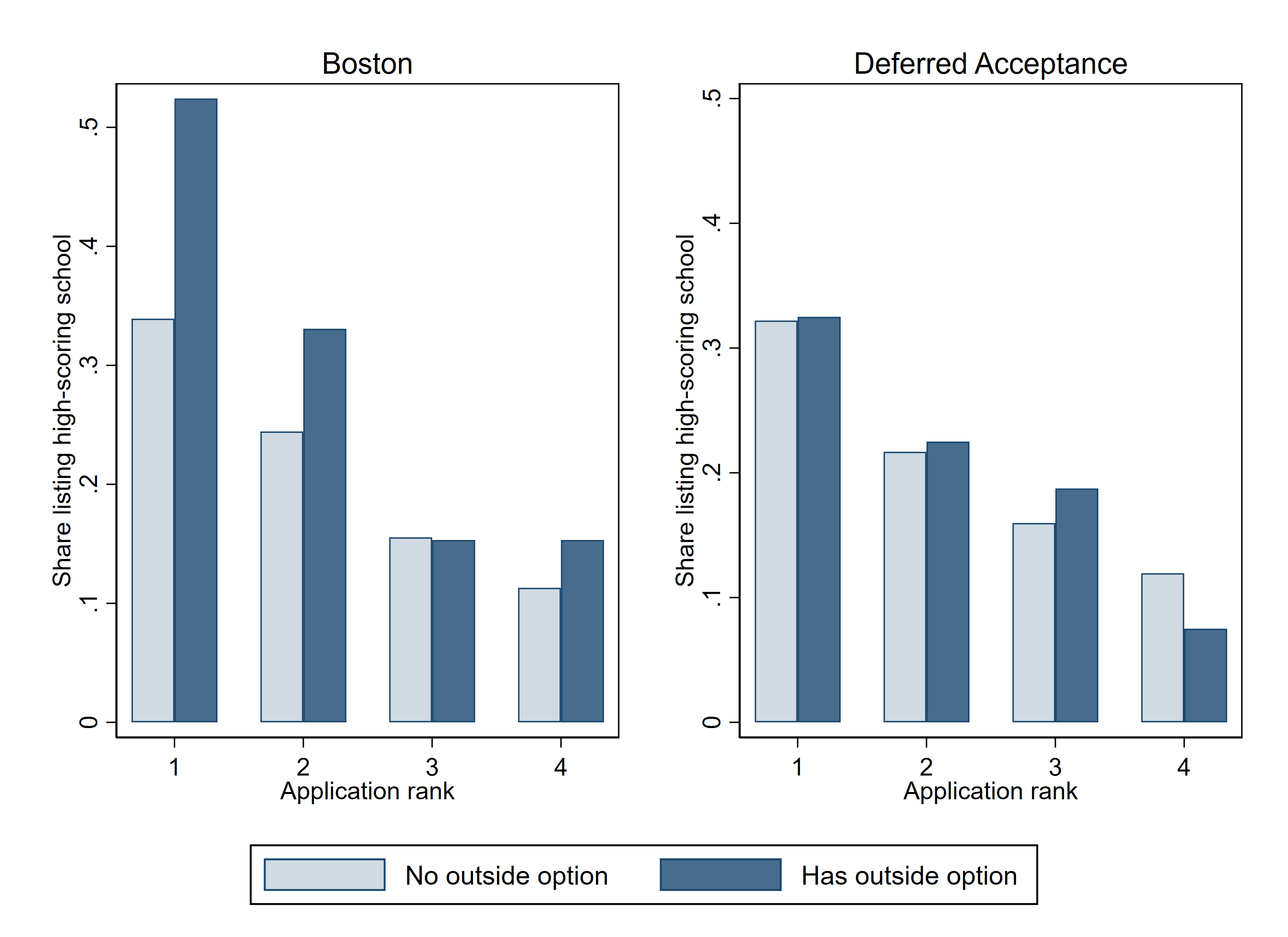Centralized School Choice with Unequal Outside Options
Abstract
This paper introduces a simple school choice model in which all students have the same ordinal preferences over schools but only some have access to an outside option. Our model predicts that, under a manipulable school choice mechanism, students with the outside option are more likely to apply to popular schools. We show that while students with the outside option benefit from manipulable systems, students without the outside option may experience either welfare gains or welfare losses. We evaluate the positive predictions of the model using a difference-in-differences design that leverages a change from the Boston mechanism to a deferred acceptance mechanism in the New Haven, Connecticut school district. Consistent with the theoretical predictions, students with an outside option are more likely to list popular, highly-rated schools under the manipulable mechanism, but this gap disappears after the switch to the deferred acceptance mechanism.
Figures From the Paper
- Coauthors: Mohammad Akbarpour, Adam Kapor, Winnie van Dijk, Seth Zimmerman
- Published: Journal of Public Economics (June 2022)
- Date: 2022

